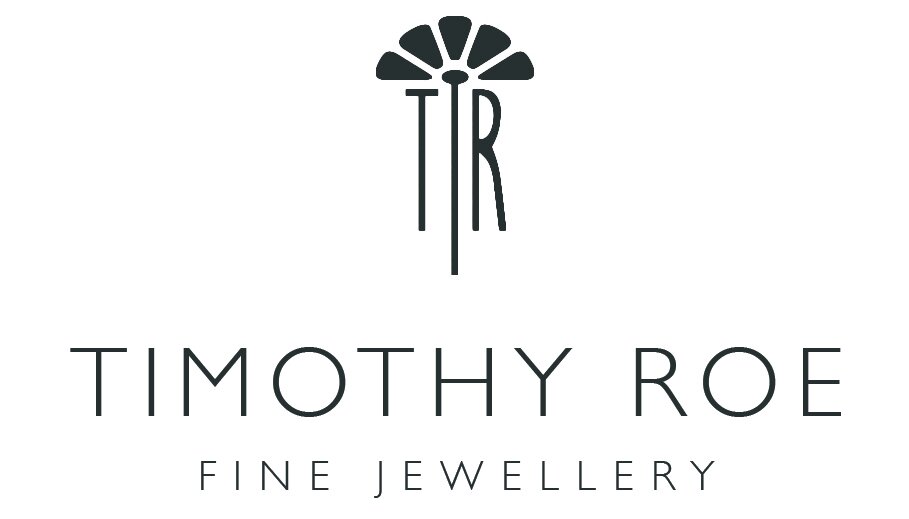Why Use Computer Aided Design (CAD) for jewellery?
My Perspective On How Our Business Was Evolving And Why I Chose To Invest In Computer Aided Design And Manufacture
When I first started in jewellery in the early eighties, the designs in shop windows were not very imaginative. Gold was king and the bigger and heavier the piece of jewellery the better. Curb bracelets and chains were stacked around wrists and necks, hollow bangles that only looked heavy, jingled on arms. Oversized hollow charms worn as pendants of the Egyptian queen Nefertiti were everywhere. This was jewellery mass production at its peak - Italian manufacturers ruled this part of the jewellery market with their chain making machines, stamping presses and clever designs. The lower price of gold, which stayed pretty constant all through the 80’s and 90’s and up to the beginning of 2005, helped boost demand too.
The question for jewellers was “why try to make new designs ourselves when Italian, Spanish and Turkish-made jewellery was keeping our customers very happy?”
Things began to change when gold started its rise in price. On the 1st January 2005 the price was £225 per ounce and this rose to £1160 in 2011- over a 500% increase!
During this period there was a huge decline in demand due to the high prices of gold which led to manufacturers and wholesalers going out of business. Where we could choose between maybe 50 styles of chain links in all weights, suddenly the choice was 10 styles and only in smaller and lower weight links.
It had never been never cost effective to make bespoke chains and bracelets as you were competing with machines and enormous markets. Suddenly, as the hunger for gold evaporated, there grew a bigger demand for diamonds, especially in rings and this was something that could be made as a one-off.
Jewellers with workshops could buy pre-made components of rings and put them together in combinations that allowed a bespoke feel for our customers and we had been doing this since the mid 90’s. Hand making from scratch had always been a possibility but the costs were high and if the design was interpreted in a slightly different way by the goldsmith who was making the piece, then a customer might not be too happy - we had to remake rings in these cases more times than I would have liked!
The New Kid on the Block
At an upcoming trade show in Birmingham, I noticed an advertisement for a CAD jewellery program called 3Design by French company Vision Numeric. There were three sketches of a ring shown from different orientations and it wasn’t clear but somehow the advert implied that from these sketches, they magically became a solid CAD ring model. I went to the show and had a demo - it was not quite as easy as I had hoped but I saw enough to realise the possibilities that CAD could offer the jewellery world, or my business at least!
It certainly took me time to learn but I was very inspired with the control I could have over the design. I would confidently cost a job to the customer allowing for 30 mins or an hour on the cad part but as I had yet to make a piece like the customer wanted in this new process, I had to learn how the program could be used to do it. My confident 30 minute costed estimates from behind the shop counter would instead take me 4 or 5 hours to complete at home in the evening as I delved deeper into the program knowing I just had to master it to keep my customer happy.
I made so many mistakes too. When a digital file was completed, it had to be 3d printed and I would email these up to a 3d printing bureau in Birmingham. I remember making an American graduation style ring for a local school and instead of a boy’s size ring, I received a resin pattern the size of a bangle back from Birmingham. I was very embarrassed when the customers came to check the fit later that day.
As I made more and more pieces of jewellery using cad and became more proficient I found we were turning less customers away as we could say “Yes we can do that, we can make one”. More jobs meant more work for our 3d printing bureau in Birmingham which was the only one I knew of in the UK, and we realised we really needed our own 3d printer as the costs were high and the posting of fragile waxes resulted in them getting damaged. We ordered our first 3d printer, from Solidscape which, at the time, was one of the first used by a retail jeweller in the UK.
It was a huge investment for us but instead of the 3 years we had thought it would take to recoup the costs, it took only a year. Our own casting department followed and also another 3d printer. Extra workshop staff were needed to work on the cast pieces and new stone setters to set the diamonds were employed too.
By adopting CAD it allowed us to offer the chance to take on and complete more work, to be able to design and produce jewellery that really matched what our customers wanted and to create and grow a centre of jewellery manufacturing excellence here in Chichester.
Tim Roe.
